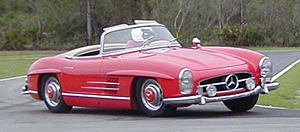
Centrifugal Force
Centrifugal force is that force that pulls an object outward from the center of a curve. When you drive around a curve it tends to pull you to the outside edge of the road. This can move you into on-coming traffic or off the roadway.
Stay to the inside portion of your lane when driving along a curve. This will give you a margin of safety allowing you to slow down and react to poor road conditions or hazards.
Centrifugal force is an outward force that acts on objects when they are spun around an axis. It is not a true force in the sense that Newtonian forces are; it is an apparent force caused by the inertia of objects that are rotating. Centrifugal force is most commonly observed when a car is driving around a curve. The force acts on the car and its passengers, causing them to be pulled outward from the center of the curve.
Centrifugal force is a result of the inertia of an object. Inertia is the property of an object that resists a change in motion. When a car is driving around a curve, the inertia of the car causes it to want to continue traveling in a straight line. In order to follow the curve, the car must experience a force that is pushing it away from the center of the curve. This force is called centrifugal force.
The magnitude of centrifugal force is determined by the speed of the car, the radius of the curve, and the mass of the car. As the speed of the car increases, the centrifugal force increases. The radius of the curve also plays a role; the smaller the radius, the greater the centrifugal force. The mass of the car also affects the magnitude of the force, as heavier cars experience more force than lighter cars.
When driving around a curve, the centrifugal force acts on the car and its passengers, pushing them away from the center of the curve. This causes the passengers to feel as if they are being “thrown” outward. This sensation is often referred to as “centrifugal force” and is a common experience for drivers and passengers when taking sharp turns.
It is important for drivers to be aware of the effects of centrifugal force when driving around curves. Excessive speed can cause the force to be too great for the car to handle and can cause the car to spin out of control or even leave the road. Additionally, if the radius of the curve is too sharp, the centrifugal force can be too great for the car’s tires to handle, resulting in a skid or loss of control.
In conclusion, centrifugal force is an outward force that acts on objects when they are spun around an axis. It is a result of the inertia of the objects that are rotating and is most commonly observed when a car is driving around a curve. The magnitude of the force is determined by the speed, the radius of the curve, and the mass of the car. It is important for drivers to be aware of the effects of centrifugal force when driving around curves and to adjust their speed accordingly to avoid skidding and loss of control.















